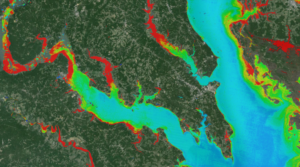The Revised Draft Imagery Requirements supplement for the thermal imaging option is now available for review and comment. The Imagery Requirements supplement is a subset of the Space Segment Requirements Document. It contains only the algorithm, spectral band, radiometry, and geometric instrument requirements. Please provide comments pertaining to this document to Patricia Dombrowski by June 30 , 2006.

Be Part of What’s Next: Emerging Applications of Landsat at AGU24
Anyone making innovative use of Landsat data to meet societal needs today and during coming decades is encouraged to submit and abstract for the upcoming “Emerging Science Applications of Landsat” session at AGU24.





